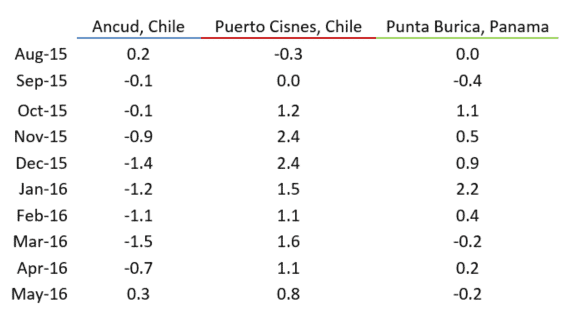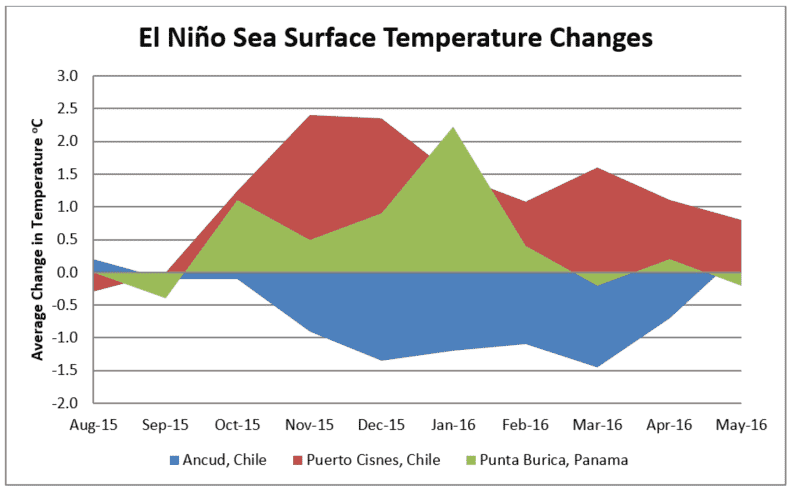According to many sources, higher temps of 2-4oC above normal due to a strong el Niño, lack of rainfall and water movement, and lots of sunlight caused the toxic algae explosion.
Pseudochattonella verruculosa is the microalgae responsible for the Chile fish kill. It has been identified around Chile salmon farms as far back as 2004. According to article in the journal of Harmful Algae, this algae is a "heterokont flagellate", found as far away as Wellington Harbor in New Zealand.
More recently, as of May 23, 2016, news of the effect of the El Niño in Chile continue, with the death of a variety of sea life including 1000's of tons of sardines and 10 different species. This has prompted conclusions that the el Niño is still persistent in causing increased sea temperatures and the resulting toxic algae, however, sea temperature data near study sites in Panama show that the sea temperature increase due to el Niño peaked in January, 2016 and leveled off in March, 2016 (Table 1) (seatemperature.info and seatemperature.org).

When examining data from the city of Ancud on the island of Chiloe (Figure 1) where 2/3 of all Chilean Salmon is grown, it is surprising to see that sea temperatures have actually decreased during the el Niño period compared to monthly 5 year averages.

This indicates that the increase in sea temperatures likely did not come from increased warm westerly ocean currents as Ancud is on the west side of Chiloe (Figure 2).

Contrary to this, average sea temperature data from Puerto Cisnes, a more sheltered location, shows an increase of 1.1 to 2.4oC compared to 5 year monthly averages at that location, a range similar to that seen in the Pacific Ocean near Panama.
However, unlike the leveling of temperature off the coast of Panama from March onwards, the sea at Puerto Cisnes was still on average hotter, by 0.8oC during the first few weeks of May.
This increase in temperature is likely coming from an increase in solar radiation rather than ocean currents and should correlate with salmon mortalities due to the increase in associated toxic algae densities.
In contrast to this, toxic algae should indeed be lower on the west facing side of the island of Chiloe, with lower salmon mortalities if the correlation between el Niño, increased temperatures, toxic algae and salmon mortalities holds true.




